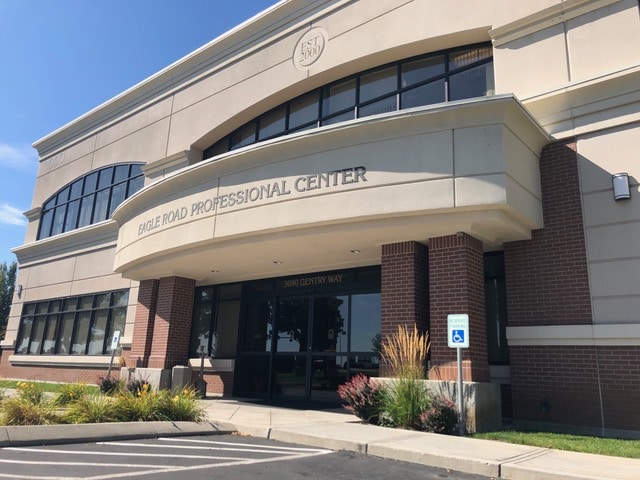Mastopexy
Mastopexy (breast lift) is a surgical procedure for lifting and reshaping sagging breasts. Aging, pregnancy, weight loss and gravity can all cause breasts to sag. By removing excess skin and tightening supporting tissue, breasts can be made to sit higher on the chest and be firmer to the touch. In addition, the nipple and areola can be repositioned or resized to further enhance breast appearance. Because mastopexy does not change breast size, it can often be combined with breast augmentation or reduction.
Candidates For Mastopexy
An eligible mastopexy candidate is in good overall health, maintains a stable weight, and has realistic expectations about what mastopexy can do. A woman who chooses to undergo mastopexy has one or more of the following:
-Sagging breasts
-Breasts that have lost shape or volume
-Breasts that are flat or elongated
-Overly large areolas
-Nipples or areolas pointing downward
-One breast lower than the other
A woman planning to have (more) children should consider the effects that child birth, hormonal changes, weight fluctuations and nursing may have on the beast as these factors can counteract the benefits and effect the long term results of a mastopexy procedure.
The Mastopexy Procedure
Mastopexy is performed on an outpatient basis most commonly under general anesthesia, and usually takes 2 to 4 hours. Depending on the size and shape of the breasts, as well as the degree of sagging and amount of excess skin, one of the following types of incisions is often used:
- Two rings, one larger than the other, around the areola
- A keyhole or lollipop shape, around the areola and down to the breast crease
- An anchor shape, beginning in the breast crease, and extending up to and around the areola
After the incisions are made, breast skin and sometimes breast tissue is removed and reshaped to achieve the desired breast contour. The nipple and areola are usually moved higher on the breast and/or also resized. Excess skin is removed to create a tighter, more defined appearance. Incisions are closed with stitches.
The type of incision pattern required is usually dependent on your specific anatomy and physical exam findings of the breast. Generally speaking, the more lifting that is required, the more incision is required to achieve the desired result. In most cases, more incision that is required usually also translates to improved contour to the final shape of the breast. The first type of incision (above) is used for small breasts and leaves the least amount of scarring; the third type is used for breasts with significant sagging. During your consultation with Dr. Jarrell, he will listen to your concerns and discuss these factors with you and help you to develop a customized surgical plan that is specific to you and your goals.
Recovery From Mastopexy
For a few days following mastopexy, patients are likely to have bruising, soreness and swelling. Breasts are usually wrapped in an elastic bandage or a surgical bra for the first 24-48 hours. After the initial dressings are removed (usually at 48 hours) patients are allowed to shower but a support bra is then worn continuously for a month. In most cases sutures used are dissolvable but any remaining external stitches are removed after 1 to 2 weeks. Most patients return to work within 7-10 days as long as work requirements are permissible. Exercise and other strenuous activity should be avoided for about a 4-6 weeks and are usually resumed on a graduated basis.
Results Of Mastopexy
Mastopexy produces immediate results. As swelling subsides and scars fade, and breast tissues and shape continue to settle, the breasts should continue to improve in appearance.
The procedure does leave scars on the breast, but Dr. Jarrell’s goal is to make scarring as minimal and inconspicuous as possible by taking every effort to place the scars in well-planned locations along the breasts’ natural contours to conceal them. Scars fade with time, and usually cannot be seen when a patient wears a bathing suit or low-cut top. As with all surgical scars, they can take up to 9-12 months to reach full maturity. Dr. Jarrell will help guide you in steps you can take to help maximize the resulting appearance of these scars.
Patients who thoroughly discussed their goals prior to surgery and had realistic expectations of what it could provide, report high satisfaction levels. Although the breasts are still subject to the effects of aging, mastopexy produces long-lasting results.
Risks Of Mastopexy
In addition to the usual risks associated with surgery and anesthesia, risks specific to mastopexy include the following:
-Temporary or permanent change in nipple/breast sensation
-Irregularities in breast contour/shape
-Asymmetry
-Partial or total loss of nipple/areola
-Scarring
Some patients may experience some degree of asymmetry as the majority of women exhibit some type of natural breast asymmetry prior to undergoing breast surgery. Generally speaking large degrees in breast asymmetry can often be improved upon, whereas minor asymmetries may persist. Depending on the incision type used, mastopexy can produce visible scars. Although some incisions can be concealed in the natural breast contours, others cannot. During your consultation with Dr. Jarrell, he will discuss these factors with you and how they apply to your specific case in order to make sure that you feel comfortable with all aspects of the procedure before moving forward.


